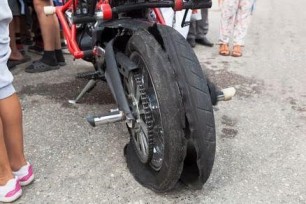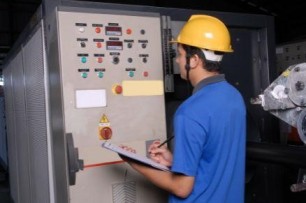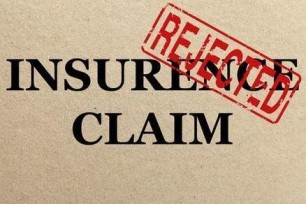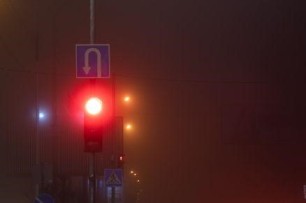General Insurance Blogs, Articles & Updates by - Magma HDI
Have us call you
- RENEW YOUR POLICY
- BUY NEW POLICY

Are you downsizing to a smaller space? Here are five tips to know
Moving to a new house can be an exciting change. And downsizing to a smaller place is beneficial for many reasons, including saving money and getting rid of unused space. However, it can be a challenge to decide which things to take with you and which to give away. If you get emotionally attached to your possessions, this kind of a move may be difficult for you. It's good to have a few tips up your sleeve for an efficient and clutter-free move.
Here are a few things to keep in mind while downsizing your house.
1. Give away or throw away:
One of the effective ways to make room in your new smaller house is by giving or throwing away the items that are no longer in use. For example, if you still have your primary school books or old clothes, you could donate them to the needy. For things that you cannot give away, you can recycle or simply throw them away.
2. Avoid renting storage units:
Storage units can be a great place for storing items when you do not have enough space in your house. They allow you to keep things you no longer use or need. However, before renting one, ask yourself whether you really need it and if you are willing to pay its rent for the next ten years. Remember one rule: if you have not used the item in the last year, you do not require it anymore.
3. Measure out your new space:
It is advisable to measure the dimensions of each room and other vital spaces of your new home. Make sure to get accurate measurements to eliminate any unnecessary furniture that won't fit. Try to manage and utilize the available space smartly to avoid any issues in adjusting to the new environment.
4. Make money for your move:
If you have numerous items that you do not need but can still be used by other people, you can set up a neighbourhood garage sale or resell them online. Create advertisements to generate awareness about your shop.
5. Avoid additional costs:
When you downsize to a smaller house, it can be tempting to buy new furniture that would go with your new place. However, this can cost a hefty amount of money. Think of how you can make the best use of your current furniture, and if you must purchase new things, aim to buy used ones whenever possible.
Setting up a few rules and focusing on what you need and do not need can make your move easier. While you're at it, it might be wise to re-evaluate your home insurance policy. Investing in the best home insurance policy in India will provide you with protection and safety in your new place. If you already have an insurance plan, don't forget to inform the firm about the change in your address to ensure you continue to receive the benefits.
Click HERE to protect your new home with a layer of best home insurance policy in India.
Disclaimer: The information provided above is for illustrative purposes only. To get more details, please refer to policy wordings and prospectus before purchasing a policy.

Easy DIY steps to clean your two wheeler's trunk
You are aware of the importance of cleaning and maintaining your two-wheeler, which can help you extend the life of your vehicle. But do you know that the trunk is often the most neglected space of your two-wheeler?
Your helmet, papers, groceries, umbrella, water bottles, etc., are primarily stored in the trunk of your two-wheeler. This makes it most susceptible to dust and dirt. In this article, we will take a look at a few easy ways to keep your trunk clean.
1. Organize:
The first step to maintaining a clean trunk is to keep everything organised. Try keeping your papers, first aid, and helmet systematically instead of throwing them into the boot. Store the essential documents in clean zip-lock plastic to avoid tears. Keep the first aid in a small pouch for easy access in an emergency. Efficiently organising the materials within the trunk helps you keep the space clean and provides you with easy access whenever you want something.
2. Dry cloth:
We tend to keep the helmets or wet umbrellas directly inside the trunk without giving a thought. One way to ensure clean trunk space is always keeping a dry cloth handy. If it is necessary to keep your wet umbrellas in the boot, keep the umbrella in plastic before placing it into the boot. To ensure that there is no water left, take a dry microfiber cloth and pat dry the area inside the boot. Do not forget to dry the area just under the seat as well. Moisture can lead to corrosion, eventually eating up the entire chassis. To avoid this, always ensure that your vehicle is dry.
3. Use sprays and cleaning solutions:
Ever so often, use mild cleaning liquid to clean the space out. Use a damp cloth to wipe down the area. After this, use the soap to wipe down inside the boot. Use a dry cloth to wipe off any remaining liquids to avoid stains.
4. Accidental spills:
Sometimes, we forget our shopping bags and end up stuffing our trunks with groceries and other essentials. This can create a chance of an accidental spill. Always use a dry cloth and a plastic container to take out the waste. After clearing out the spill, use a wet cloth to wipe down the boot’s insides. Use a non-corrosive spray or a sanitizer to get rid of the greasiness. Use another dry cloth to get rid of the residue. If you notice any dirt inside the nooks and corners, use an old toothbrush or a makeup brush to reach the area and clean out the excess gunk.
These are a few ways in which you can ensure clean trunk space. In the future, if you wish to sell your bike, a well-maintained and clean vehicle is a testament to the excellent ownership displayed by you. Another way to add value to your vehicle is by investing in the best two wheeler insurance in India. Being a responsible owner, you must ensure the safety of your two-wheeler by having the best deals to get guaranteed financial protection against any accident.
Click HERE to know more about the best two wheeler insurance in India.
Disclaimer: The information provided above is for illustrative purposes only. To get more details, please refer to policy wordings and prospectus before purchasing a policy.

Know how to control your bike after a tyre burst
When you go out for a drive, hearing your tyre burst is the last thing you want. It can lead to a deadly accident. Many companies have now introduced tubeless tyres to reduce the chances of a blowout. However, there is very minimal time to control your bike if one does happen.
Since time is of the essence in such emergencies, it is important to know exactly what you need to do. So before going on your next ride, make sure you go through the following tips on controlling your bike after a tyre burst.
1. Do not hit the brakes instantly:
Whenever something goes wrong while driving or when we sense an emergency on the road, our natural instinct is to hit the brakes. However, this is not the universal solution to all emergencies. When you press the brakes suddenly, you may be thrown off your bike into the oncoming traffic.
If you are travelling at high speeds, more than 90 kmph, applying brakes suddenly can result in dangerous situations. Pressing brakes at high speeds can make the vehicle wobble, causing you to lose control of it. Instead, you should try rolling on the bike without using the brakes at all.
2. Maintain appropriate speed:
Speeding is one of the leading causes of accidents occurring on the road. When you go over the speed, say, more than 100 kmph, you are more likely to face a nasty collision in case of a tyre burst.
The chances of safely coming to a halt on time are much higher when travelling at slow/safe speeds. On the other hand, speeding will make your bike uncontrollable during a tyre burst and reduce or eliminate the chances of recovery afterwards.
3. Use engine braking:
If you have a bike with good engine braking, you can use that to slow down your vehicle instead of hitting the brakes. When your bike suffers a tyre burst, shift down the gears and accelerate using engine braking to slow down gradually. By this method, your bike will not suffer from the shock of sudden braking, and the chances of losing control of your bike will reduce significantly.
4. Keep your bike straight:
When experiencing a tyre burst, there isn't much time to avoid an accident or think about directions. However, to save yourself, you should try to keep your bike straight and steady. Turning the motorcycle or veering can worsen the situation.
Of course, if there is a danger zone in front of you, making a turn is the only choice. However, do this with acute linearity because a sudden directional change can unbalance the bike and result in a mishap.
Accidents are unpredictable and can happen when we least expect them. Keeping a check on your bike and conducting regular maintenance can prevent an unexpected tyre burst. In addition to it, secure yourself and bike in such uncertain times through individual accident insurance. Ride safe so that you enjoy riding your bike again!
Click HERE to buy the best individual accident insurance.
Disclaimer: The information provided above is for illustrative purposes only. To get more details, please refer to policy wordings and prospectus before purchasing a policy.

Five best tips to adhere for ensuring total safety of workers at manufacturing facilities and factories
Workers are the backbone of any manufacturing facility. Working relentlessly to get the best quality products is a result of their hard work. But sometimes, we tend to neglect the importance of these workers and take their safety for granted. Inspection of workspace safety throughout the day is one way to ensure a safe environment in the factory. This also shows that you care for your employees and their well-being. Safe working spaces have a direct effect on the productivity of the workforce.
In this article, we will discuss a few ways in which you can ensure the total safety of your workers.
1. Usage of machines and their maintenance:
Improper use of machines is one of the leading causes of workplace injury. Using tools and equipment for their intended purpose only is the first step to avoiding an accident. For the newer workforce, orientation sessions can be conducted to familiarise them with the latest tools and machinery. Regular cleaning and inspection should also be made part of their work to ensure added safety and extended lifetime of the machines.
2. Clear the aisles:
Aisles are the most used parts of a factory. Be it the moving of various things from one place to another or simply the employee movement within the facility. It is extremely important to frequently clean the space if the area is used for liquids and other greasy materials. Clean up any spillage immediately to ensure the best working conditions. Also, make sure that there are no small parts of the machinery lying around that might cause tripping and falling.
3. Keep emergency exits clear:
Blocked emergency exits have been the reason for some of the most dangerous and fatal hazards in manufacturing units and factories. To ensure safe access to the exit, avoid blocking emergency exits. A cluttered work area will also pose a danger if one wants to exit immediately. Placing different objects in their specified storage areas will help keep the work area clean and organised.
4. Eliminating fire hazards:
Working with combustible materials can pose real threats to your factory and the people working in it. If you work with combustion tools, keeping only the required amount at hand can ensure a lesser chance of any danger. When not using the chemicals, keep them stored in a cool dark place away from ignition points. Do not forget to store the waste in metal holders and dispose of it daily.
5. Take breaks:
Work-related injuries are caused due to strained muscles and over exhaustion by the workers. When tired and burnt out, one finds it difficult to focus and deliver top-quality work. Instead, taking regular breaks ensures alertness during work. Providing the workers with proper restrooms and clean drinking water facilities is another way to ensure that your workers are taken care of and that you care for their well-being. A rule of thumb is to allow a fifteen-minute and a thirty-minute break for working for four hours and six hours, respectively.
These are a few ways to ensure that your workers are safe at the facility. Investing time and efforts for the well-being of your workers will provide a dedicated workforce that delivers top-quality outcomes. To add more value to their lives and work, invest in public liability insurance to help them and your factory in an emergency and cover the medical and other expenses incurred during the process.
Public liability insurance is a safety net that provides financial protection if your business faces a compensation claim due to a worker’s injury or property damage. Do not forget to look for the best public liability insurance India options.
Click HERE to find out more about public liability insurance India.
Disclaimer: The information provided above is for illustrative purposes only. To get more details, please refer to policy wordings and prospectus before purchasing a policy.

Eight best tips to help you pass your driving test
A driving test can be one of the biggest challenges for many. The exam can elevate multiple emotions and increase your stress about the final results. However, getting your driver’s licence and getting out on the road is a joyful feeling.
To help you pass the test with ease, here are a few tips that will come in handy.
1. Stay calm and do not panic:
It is normal to feel anxious and worried about the driving test. There are high chances of messing up when you are stressed. Therefore, avoid panicking during the exam and plan out your approach with a calm mind.
2. Get experience:
Practice and experience are two essential elements of passing the test. And both these elements complement each other. Without proper practice, you won’t be able to gain the experience that you might need. Get to know all the rules and regulations, and have an experienced driver to guide you on the dos and don’ts of driving.
3. Take the car that is familiar to you:
One of the critical tips to pass the driving test is to take your car with you. An unfamiliar vehicle can make giving the exam challenging. For example, if it rains, you will be comfortable handling your car’s controls rather than searching for the controls in a vehicle that is new to you. Another benefit of taking your car is that you will be familiar with the car’s judgment, and the test will go easier.
4. Use both hands for steering the wheel:
For a positive result and better judgment, use both your hands to get the grip of your steering wheel. Using only one hand may create difficulties in driving, resulting in a failed driving test.
5. Learn to drive in different conditions:
Weather is unpredictable. Hence, you must learn how to drive in different weather conditions, so you are always prepared in case of any sudden weather changes. Furthermore, practising driving in various weather conditions will help you be on the safer side.
6. Keep your basics right:
It is common for people to forget the basics while they are tense. Due to nervousness, standard rules such as checking mirrors can slip from the mind. Avoid making common mistakes like not checking the surroundings, lack of focus while reverse parking, and more. Keeping your basics right will help ease the burden and ensure a favourable outcome from your driving exam.
7. Do not hesitate to ask questions to the examiner:
Often, people feel scared to ask questions to the examiner in a fear that they will sound stupid or what the examiner might think. If you are unclear about what the examiner asked you to perform, do not hesitate to ask them to repeat what they said. Open communication is the key to passing your driving test without messing up.
8. Arrive at least 30 minutes before the given time:
Do not panic and rush to the location at the last hour. Doing so will create unnecessary stress and put you in a panic mode, affecting your driving exam. Therefore, get there 30 minutes before the scheduled test to get an idea about the surroundings.
Driving tests can be cleared quickly with a calm mind and following the tips mentioned above. Once you pass the tests, ensure that you follow all the traffic rules. Always carry essential documents with you, such as your driving licence, PUC, online car insurance details, so that you will be all clear even if the traffic police stops and question you.
Click HERE to know more about online car insurance plans best suited for your car.
Disclaimer: The information provided above is for illustrative purposes only. To get more details, please refer to policy wordings and prospectus before purchasing a policy.

Here's how you can fix the chain slipping problem in your bike
The chain on the motorcycle is one of the essential parts that helps its swift motion. A loose or malfunctioning chain would restrict the vehicle's movement. Regular maintenance and oiling are a few ways to ensure that the chain on your bike is working correctly. However, even after proper upkeep, we often encounter situations when the chain is loose. One of the main reasons for loose chains is untightened bolts. Other reasons can be a worn-down chain, mismatched teeth alignment, or the wrong sized chain.
Loose chains can have hazardous consequences. You can lose control of your bike, which can be threatening, especially on a busy road. Chain breakage can hurt the biker's leg and cause injuries. It can also get caught between the wheels and cause an abrupt stop, leading to the bike toppling over.
In this article, we will discuss a few ways to avoid the constant slipping of the chains.
1. Fixing new chains:
Brand new chains tend to stretch a little. The interlinking joints wear into each other gradually. It is advisable to ride at least fifty kilometres to loosen up the new chain a bit. Since the quality of chains can vary depending on the company and the metal, riding for long distances allows the new chain to adjust and get to the optimum stretch. Once you feel like the chains have loosened up a little, you can tighten them. After this initial step, you would not need to worry about the chains for some time.
2. Tightening the bolts:
Sometimes the bolts are not tight enough or become loose over time. Talk to a mechanic and understand how much the bolts need to be tightened to keep the chain in place and prevent it from slipping away.
If you are someone who goes off-roading and manoeuvers through treacherous tracks, then this tip might be helpful to you. The constant jerks and tension that your bike goes through can also lead to the loosening of the bolts. Using a lock nut can help prevent these bolts from loosening.
3. Replacing the sprockets:
If you notice that the teeth on your chains have been worn down, you must replace them. Even if only one tooth has been affected, it can cause damage to the others as well. So timely replacement of the sprockets is vital to ensure that your chain lasts longer.
4. Changing the chain:
Over time the chains experience considerable wear and tear and can have almost no functionality. This will require you to make changes and alterations to the chain constantly. If you face this problem frequently, it is high time to consider changing the chain altogether.
These are a few ways to ensure your chain is working correctly. Chain lubrication is another way to ensure your chain lasts longer and remains intact in its position. A well-functioning chain is vital to the overall health of the bike.
Worn-out chains can cause severe accidents and be dangerous for yourself and others on the road. Broken chains can impact your bike's performance. To safeguard yourself against repair expenses, you must look into bike insurance online. With the ease of technology, now you can browse through multiple options and make hassle-free investments in the best bike insurance that satisfies your requirements. By buying bike insurance online, you get an additional advantage of instant service and a reasonable premium by eliminating intermediaries.
Click HERE to check out bike insurance online.
Disclaimer: The information provided above is for illustrative purposes only. To get more details, please refer to policy wordings and prospectus before purchasing a policy.

Here are ten reasons why motor insurance claims get rejected
We all know motor insurance has been made mandatory in our country. The purpose of purchasing car insurance coverage is to assure financial protection for the vehicle if it is involved in an accident.
When you file a claim with your insurer for automobile damage, you expect them to reimburse you as soon as possible. There are three possibilities in that situation: your claim gets granted, your insurance company may request further information, or your claim gets denied. And often, motor owners fail to get their car insurance claims resolved to their satisfaction.
If you’re facing a similar circumstance, you might want to investigate the following causes for claim denials.
1. Driving while intoxicated:
If the driver engages in driving under the influence of alcohol or other intoxicants, in that case, the insurer will deny the claim.
2. An unreal claim of the No Claim Bonus (NCB):
The insurer refuses any claim for NCB falsely declared and cancels any benefits under the policy’s damaged section.
3. Unidentified or unauthorized driver:
The claim gets rejected if the driver doesn’t possess a valid driver’s licence or if the permit is fraudulent, expired, or for a different vehicle class. This can also happen if someone besides the registered owner is driving it.
4. Delay in paying the premiums:
Go through your policy to find if it grants you a grace period to pay the premium beyond the deadline. Not paying premiums on time denies the claim and is one of the most common reasons. Avoid delays and buy motor insurance online for convenient paying options.
5. If there is no evidence to prove the crash happened:
Having no photos of the scene or any other documentation of the collision or car damage may force the insurer to deny your claim.
6. Claim of non-accidental loss:
The insurance doesn’t cover the wear and tear of your vehicle. Therefore claiming any damage that isn’t accidental might result in the claim getting rejected.
7. Confidentiality of information:
When you buy motor insurance online, you must provide the insurance company with every personal detail and update the same if required. This includes your name, address and any past car accidents. The insurer possesses the power to reject your claim due to non-disclosure.
8. Automobile not appropriately parked:
If your vehicle was not in a secure location during the time of theft or crash, your claim gets denied. Therefore, the insurer will always ask if you had parked your car correctly.
9. Missing monitor or safety device:
Claims get denied if you haven’t installed alarms, locks or tracking devices in your vehicle despite being mentioned.
10. Ongoing inspection:
Most insurers demand that your motor be examined before purchasing insurance. It lets them know of all harm that has already occurred. Insurers have the power to reject your claim at any point during the insurance claim procedure if you fail to follow this protocol.
After a vehicle accident, the last thing you want to deal with is an insurance claim denial. Repairing an automobile may burn a hole in your pocket without insurance plan coverage. Focus on the points mentioned earlier to reduce the risk of a rejected insurance claim. Check the reviews of other customers for their claim settlement experiences with insurance companies before you buy motor insurance online. So, follow the above tips to avoid the situation that leads to denial of your insurance claim.
To buy motor insurance online, click HERE .
Disclaimer: The information provided above is for illustrative purposes only. To get more details, please refer to policy wordings and prospectus before purchasing a policy.

How can non-functional traffic lights affect your journey during the night
Traffic signals are an essential part of road safety. These signals are installed at intersections and busy roads to help control the movement of vehicles and avoid unnecessary congestion. They are exponentially effective during the night time when drivers generally tend to break the rules and cause mayhem on the road, which could lead to severe consequences.
But what happens when the traffic lights stop working? How can non-functional lights affect your journey during the night? By the end of this blog, you will understand the importance of traffic lights and how the situation could go haywire in their absence.
1. Risk of collisions:
At non-functional traffic lights, vehicles generally don’t stop or slow down, which usually leads to severe accidental consequences. This can put the safety of cars, drivers, passengers, and pedestrians in grave danger.
2. An increasing number of accidents:
Many underage drivers tend to drive fast and avoid maintaining the rules, which poses a massive threat to other vehicles on the road. And in the absence of traffic lights, this situation can get out of control. Speeding at unmanaged intersections invites potential safety hazards and can wreck many lives, thus increasing the number of casualties.
3. Massive traffic handling issues:
Traffic lights don't just avoid accidents; they also help handle the traffic emerging from all directions. The drivers who avoid waiting for their turns usually try to ignore the rules. They have to stop at the signals to be in sync with the other vehicles.
But, if the traffic lights are not functioning correctly, they get the liberty to jump signals without any trouble. It can cause considerable stir and chaos and make it challenging to handle the traffic.
4. Slow-moving traffic will be more chaotic:
We all have been stuck in slow-moving traffic. It takes up time and patience. Worse than slow-moving traffic is heavy traffic. It disrupts the movement and creates a jam for longer hours and distances. Traffic lights act as a saviour as it controls the direction of the fleet of vehicles and allows different sections to go first.
In the absence of functional traffic lights, the slow-moving traffic turns into heavy traffic as it will take a long time to clear the clutter. Vehicles have no idea of traffic movement at the defunct traffic signals. Overcrowding of vehicles becomes the cause of headaches for the drivers.
We discussed how the absence of traffic lights would increase the risk of road accidents. Even if the traffic lights are non-functional, we as responsible drivers must take all the necessary precautions from our side while driving a vehicle at night. Always slow down at intersections, give proper indication while making a turn, avoid over-speeding or honking.
Vehicles often get involved in accidents at night due to minor errors at the driver's part at the intersections. Investing in insurance is mandatory and of utmost importance to safeguard your vehicle against damage during unforeseen circumstances. Analyze your requirements, buy insurance from the best motor insurance company in India and always have a safe and protected ride.
Click HERE to know more about the best motor insurance company in India.
Disclaimer: The information provided above is for illustrative purposes only. To get more details, please refer to policy wordings and prospectus before purchasing a policy.


